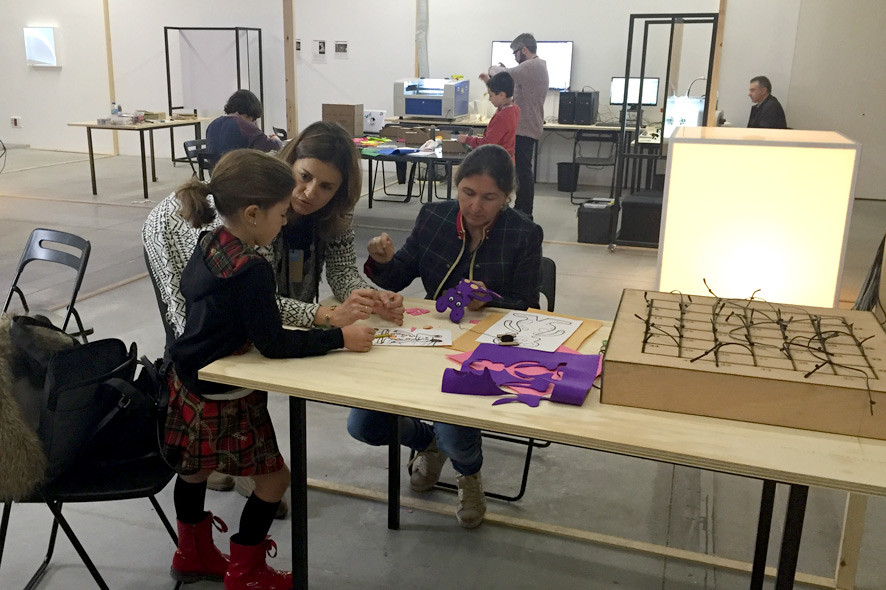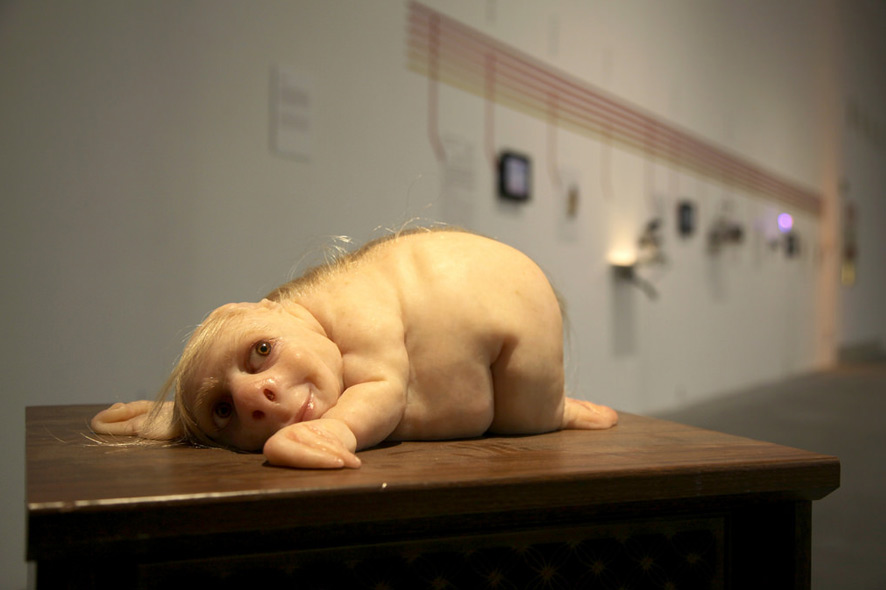More and more, traditional boundaries between the disciplines of art and science are overcome. This gets very visible in the Materia Prima exhibition at LABoral Centro de Arte y Creación Industrial, which is located in the port city Gijon in Northern Spain. The exhibition was curated by Ars Electronica Export – a division of Ars Electronica which is realizing exhibitions, workshops and other educational programs with partners from around the world since 2004. We caught up with Lucía García Rodríguez, the Managing Director of LABoral, and talked with her about her understanding of the term Materia Prima, about the exhibition itself that is structured in several laboratories and recently opened in Gijón and about the Spanish view of the connection between art and science.
What’s your understanding of the term Materia prima?
Lucía García Rodríguez: Materia prima, or raw material, speaks to the essence of things, the starting point, what remains inalterable, the most important core reflection on which we base the construction of our surrounding environments. The title of the exhibition is translated into a space where the general public is invited to take an active part in this theoretical-practical reflection, in a rapprochement with the processes which artists and scientists engage with when it comes to relating with and contributing to their surrounding environments with differing methodologies.

Credit: Martin Honzik / Ars Electronica
The exhibition consists of a set of labs – how did the visitors like it?
Lucía García Rodríguez: The experiential focus that Gerfried Stocker, the artistic director of Ars Electronica, wanted to give Materia Prima was a further step forward in the centre’s engagement with the end user or visitor. It was also useful in acting as a way of explaining who we are and opening up to the wider community with the ultimate goal of fostering their empowerment, of bringing them into closer contact with new art practices, inviting them to get involved as active agents, breaking down the conventional boundaries between the cultural institution and the end user.
It meant implicating different kinds of collectives in processes of experimentation, observation and practice in a surprisingly natural way. I am convinced that throughout the duration of the exhibition this exchange between the centre and the users will continue apace. To be honest, I am really optimistic given the wonderful feedback we have got to the various activities organised in the space since it opened.

Credit: Sergio Redruello / LABoral
What’s your personal favourite artwork at the exhibition?
Lucía García Rodríguez: It’s hard for me to single out one particular piece from the exhibition because I believe that Gerfried’s work is extremely meticulous and reflective and the discourse means that the pieces, besides their own individual thrust, are enhanced by the way they are coupled together with the others. Having said that, as you’ve asked me to choose one, I would opt for Chikikinkutsu by Nelo Akamatsu, winner of the 2015 Prix Ars Electronica in the Digital Musics & Sound Art category. It is an exceptionally delicate work that is grounded in an exquisite take on minimalism and alludes to nature through the action of geomagnetism; it is a masterful and beautiful work by the Japanese artist.

Credit: LABoral
As a multidisciplinary institution LABoral is very interested in crossovers between art and science since its creation in 2007. What were the main reasons to move in this direction?
Lucía García Rodríguez: We believe that a contemporary art research centre focused on production, training, exhibition and diffusion of art, science, technology and society was, more than anything else, a need in our particular context. And I believe that it has been adopted and shared by both the art world and the wider community which is increasingly more interested in what is going on in contemporary creation and thinking.
At this time of historic crossroads for Asturias the fact that there were no centres for artistic research and experimentation in Spain presented itself as an opportunity with huge potential, flexibility and great hopes to be able to enrich the debates taking place today. It was also a question of offering an overview of contemporary art as part of an active endeavour to communicate with a wider area of influence, in the firm belief that art has the power to regenerate society through innovation.

Credit: Sergio Redruello / LABoral
How is the focus on art and science perceived in Spain in general?
Lucía García Rodríguez: The interest in and audiences for these kinds of projects are growing all the time. Spain has suffered from structural problems with an education system that separates disciplines like art, science and technology and allows for very little interaction between them. In fact, it often seems as if they are poles apart or mutually exclusive. However, I think that the current moment in time is conducive to a complete rethinking of the whole system, returning to the essence, to the materia prima or raw material in order to explore new ways that will contribute more effectively to the society in which we live. And that is precisely the task we have set ourselves.
The Materia Prima exhibition can still be seen to May, 8, 2016 at the LABoral Centro de Arte y Creación Industrial in Gijón in Spain. You will find more information on export.aec.at/materiaprima.

Lucía García Rodríguez: Law graduate from the Universidad Complutense de Madrid with postgraduate studies in European Affairs and Cultural Institutions Management. She trained as broker at Barry Rogliano Salles, Paris and as risk analyst in Barclays Bank’s International Risk Management Department in London. After working in Paris and London, she returned to Madrid to take up the position of Coordinator of the International Fashion Week and the Convention Centre of IFEMA, Madrid Trade Fair Centre. Two years later she is appointed Deputy Director of ARCO, the International Contemporary Art Fair of Madrid, Spain. In August 2006, almost a year before its official opening, started working with the founding management in launching LABoral as its General Manager and as its Head of Public Programmes. In September 2011 she is appointed Managing Director of LABoral.
